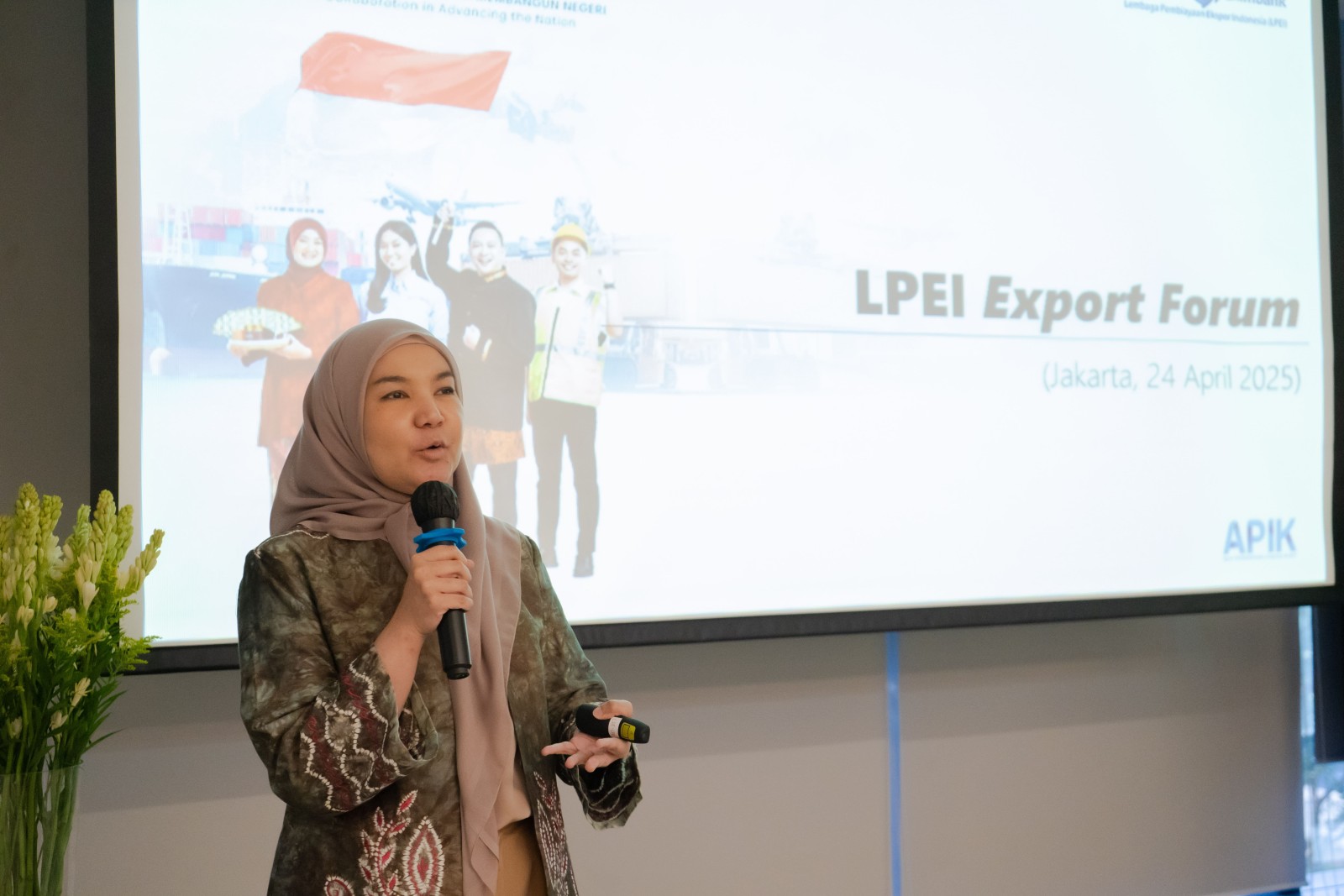
Share
Jakarta, 30 April 2025 – Amid global challenges such as new tariffs and the US-China trade war, Indonesian exporters still have opportunities to expand their markets through strategic cooperation such as the Trans-Pacific Partnership (TPP), BRICS, and various free trade agreements (FTAs) with other strategic countries.
Market Intelligence & Leads Management Chief Specialist Indonesia Eximbank, Rini Satriani, explained that commodities such as palm oil, fisheries (such as sardines), sugar, and household products still have great trade potential in BRICS and TPP countries. "The trade potential (unrealized potential) of palm oil and its derivatives in BRICS and TPP countries reaches USD9.8 million. Sardines have a potential of USD 23 million, sugar commodities reach USD5.4 million, and household products such as shampoo reach USD32.9 million," said Rini.
Facing the challenges of growing global protectionism, Indonesia must prepare for the new reality in the balance of international trade flows. National exporters are required to capture opportunities through innovation, proactive attitudes, and aggressive competitiveness by continuing to explore new export markets," said Rini at the LPEI Export Forum (LEF) Jakarta 2025 held some time ago.
Rini emphasized that Indonesia Eximbank, as part of the Government's policy instrument, will continue to support national export players not only through the provision of financial facilities but also through non-financial services such as the provision of market information, identification of prospective buyers, analysis of target market conditions, and expertise-based assistance to improve the capabilities and strategic knowledge (knowledge assets) of Indonesian exporters.
Furthermore, Rini said that market diversification is a strategic step that needs to be taken to expand export access, one of which is utilizing economic cooperation such as the Trans-Pacific Partnership (TPP), BRICS, and various opportunities from other strategic trading partner countries.
"It is not easy to shift the export market, but this can be achieved if exporters can identify credible buyers and have the right market access. As long as product quality is maintained, buyer loyalty will grow and encourage repeat orders continuously," he said.
The LPEI Export Forum (LEF) activity is a concrete effort by Indonesia Eximbank, which is carried out periodically to provide education and socialization to national exporters regarding the latest developments in exports, as well as Indonesia Eximbank services and programs that can be utilized.
Rini explained that the impact of the tariff war between the US and China on Indonesian exports will be direct and indirect. Around 10% of Indonesian exports to the United States will be directly exposed to the United States' reciprocal tariff policy. Meanwhile, the indirect impact will be felt through high rivalry due to the transfer of exports and supply chains from China to other countries, including Indonesia.
Nevertheless, Indonesia remains optimistic about the medium and long-term export prospects. Amidst global trade tensions that have not entirely subsided, vigilance against tariff and protectionist policies is still needed. However, new market opportunities through international cooperation schemes and expanding access to non-traditional trading partner countries are growth spaces that need to be maximized by national export players.
Indonesian exports show positive growth amidst the global challenges faced. Cumulatively, national exports from January to March 2025 grew by 6.9%. This growth is supported by primary commodities such as CPO (Crude Palm Oil), iron and steel, and electrical machinery and equipment.
Around 60.5% of Indonesia's total exports in the period from January to March 2025 were distributed to several primary commodities, including vegetable fats and oils (12.8%), mineral fuels (12.8%), iron and steel (10.3%), electrical machinery and equipment (6.7%), and vehicles and their parts (6.4%).
Indonesian exporters have currently succeeded in marketing their products to 192 countries worldwide, with 65.8% of total exports concentrated in 10 central destination countries such as China, the United States, India, Japan, Malaysia, Singapore, South Korea, Thailand, Taiwan, and the Netherlands.
"China and the United States are the largest trading partners, contributing 33.9% of total exports. Trading partners such as Malaysia, Singapore, and Thailand also showed positive growth, and Indonesia could withstand a decline in exports to India, Japan, South Korea, and Taiwan," Rini added.
To further increase product diversification and export markets, Indonesian exporters are encouraged to be more active in exploring information and utilizing programs provided by the Government through related ministries/institutions. One is the National Interest Account (NIA) Region provided by Indonesia Eximbank. This program aims to provide export financing for business actors targeting countries in the Africa, South Asia, and Middle East regions.
"By utilizing new market opportunities and international cooperation, Indonesia is optimistic that it can continue to increase exports and strengthen its position in the global market," Rini concluded.
Media Liason
Sam Malee
Corporate Secretary – Lembaga Pembiayaan Ekspor Indonesia
Ph. : (021) 39503600
Email : corpsec@indonesiaeximbank.go.id
Web : http://www.indonesiaeximbank.go.id